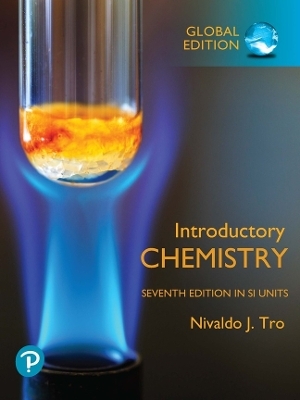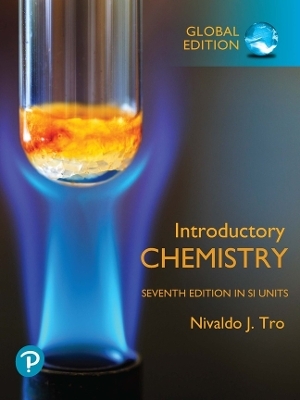
Terpenes – Flavors, Fragrances, Pharmaca, Pheromones
Wiley-VCH Verlag GmbH (Hersteller)
978-3-527-60994-9 (ISBN)
- Keine Verlagsinformationen verfügbar
- Artikel merken
This concise overview of the structures of terpenes and their applications covers both the structure, natural sources, biological and pharmacological effects, as well as selected total syntheses. This book includes a chapter on structure determination, as well as added information on biogenesis, polycyclic terpenes, gingkoloids and neo-hopanes. This is an ideal introductory book for anybody starting work in this field.
Eberhard Breitmaier received his PhD at the University of Tubingen, Germany, as a member of the research group of Ernst Bayer. After a postdoctoral stay followed by a position as assistant professor at the University of Houston, Texas, he returned to Tubingen to gain his lecturing qualification in 1971. He was Professor for Organic and Analytical Chemistry at the University of Bonn from 1975 until 2004. His research focuses on 3-alkoxyacroleine as a reagent for chemical syntheses, porphyrinoid annulenes and natural products. Professor Breitmaier has authored many scientific publications and several textbooks on NMR-spectroscopy, organic chemistry and natural products.
Preface.1 Terpenes: Importance, General Structure, and Biosynthesis.1.1 Term and Significance.1.2 General Structure: The Isoprene Rule.1.3 Biosynthesis.2 Hemi- and Monoterpenes.2.1 Hemiterpenes.2.2 Acyclic Monoterpenes.2.3 Monocyclic Monoterpenes.2.3.1 Cyclopropane and Cyclobutane Monoterpenes.2.3.2 Cyclopentane Monoterpenes.2.3.3 Cyclohexane Monoterpenes.2.3.4 Cymenes.2.4 Bicyclic Monoterpenes.2.4.1 Survey.2.4.2 Caranes and Thujanes.2.4.3 Pinanes.2.4.4 Camphanes and Fenchanes.2.5 Cannabinoids.3 Sesquiterpenes.3.1 Farnesanes.3.2 Monocyclic Farnesane Sesquiterpenes.3.2.1 Cyclofarnesanes and Bisabolanes.3.2.2 Germacranes and Elemanes.3.2.3 Humulanes.3.3 Polycyclic Farnesane Sesquiterpenes.3.3.1 Caryophyllanes.3.3.2 Eudesmanes and Furanoeudesmanes.3.3.3 Eremophilanes, Furanoeremonphilanes, Valeranes.3.3.4 Cadinanes.3.3.5 Drimanes.3.3.6 Guaianes and Cycloguaianes.3.3.7 Himachalanes, Longipinanes, Longifolanes.3.3.8 Picrotoxanes.3.3.9 Isodaucanes and Daucanes.3.3.10 Protoilludanes, Illudanes, Illudalanes.3.3.11 Marasmanes, Isolactaranes, Lactaranes, Sterpuranes.3.3.12 Acoranes.3.3.13 Chamigranes.3.3.14 Cedranes and Isocedranes.3.3.15 Zizaanes and Prezizaanes.3.3.16 Campherenanes and Santalanes.3.3.17 Thujopsanes.3.3.18 Hirsutanes.3.4 Other Polycyclic Sesquiterpenes.3.4.1 Pinguisanes.3.4.2 Presilphiperfolianes, Silphiperfolianes, Silphinanes, Isocomanes.4 Diterpenes.4.1 Phytanes.4.2 Cyclophytanes.4.3 Bicyclophytanes.4.3.1 Labdanes.4.3.2 Rearranged Labdanes.4.4 Tricyclophytanes.4.4.1 Pimaranes and Isopimaranes.4.4.2 Cassanes, Cleistanthanes, Isocopalanes.4.4.3 Abietanes and Totaranes.4.5 Tetracyclophytanes.4.5.1 Survey.4.5.2 Beyeranes.4.5.3 Kauranes and Villanovanes.4.5.4 Atisanes.4.5.5 Gibberellanes.4.5.6 Grayanatoxanes.4.6 Cembranes and Cyclocembranes.4.6.1 Survey.4.6.2 Cembranes.4.6.3 Casbanes.4.6.4 Lathyranes.4.6.5 Jatrophanes.4.6.6 Tiglianes.4.6.7 Rhamnofolanes and Daphnanes.4.6.8 Eunicellanes and Asbestinanes.4.6.9 Biaranes.4.6.10 Dolabellanes.4.6.11 Dolastanes.4.6.12 Fusicoccanes.4.6.13 Verticillanes and Taxanes.4.6.14 Trinervitanes and Kempanes.4.7 Prenylsesquiterpenes.4.7.1 Xenicanes and Xeniaphyllanes.4.7.2 Prenylgermacranes and Lobanes.4.7.3 Prenyleudesmanes and Bifloranes.4.7.4 Sacculatanes (Prenyldrimanes).4.7.5 Prenylguaianes and Prenylaromadendranes.4.7.6 Sphenolobanes (Prenyldaucanes).4.8 Ginkgolides.5 Sesterterpenes.5.1 Acyclic Sesterterpenes.5.2 Monocyclic Sesterterpenes.5.3 Polycyclic Sesterterpenes.5.3.1 Bicyclic Sesterterpenes.5.3.2 Tricyclic Sesterterpenes.5.3.3 Tetra- and Pentacyclic Sesterterpenes.6 Triterpenes.6.1 Linear Triterpenes.6.2 Tetracyclic Triterpenes, Gonane Type.6.2.1 Survey.6.2.2 Protostanes and Fusidanes.6.2.3 Dammaranes.6.2.4 Apotirucallanes.6.2.5 Tirucallanes and Euphanes.6.2.6 Lanostanes.6.2.7 Cycloartanes.6.2.8 Cucurbitanes.6.3 Pentacyclic Triterpenes, Baccharane Type.6.3.1 Survey.6.3.2 Baccharanes and Lupanes.6.3.3 Oleananes.6.3.4 Taraxeranes, Multifloranes, Baueranes.6.3.5 Glutinanes, Friedelanes, Pachysananes.6.3.6 Taraxastanes and Ursanes.6.4 Pentacyclic Triterpenes, Hopane Type.6.4.1 Survey.6.4.2 Hopanes and Neohopanes.6.4.3 Fernanes.6.4.4 Adiananes and Filicanes.6.4.5 Gammaceranes.6.5 Other Pentacyclic Triterpenes.6.5.1 Survey.6.5.2 Stictanes and Arboranes.6.5.3 Onoceranes and Serratanes.6.6 Iridals.7 Tetraterpenes.7.1 Carotenoids.7.2 Apocarotenoids.7.3 Diapocarotenoids.7.4 Megastigmanes.8 Polyterpenes and Prenylquinones.8.1 Polyterpenes.8.2 Prenylquinones.9 Selected Syntheses of Terpenes.9.1 Monoterpenes.9.1.1 Concept of Industrial Syntheses of Monoterpenoid Fragrances.9.1.2 (R)-(+)-Citronellal.9.1.3 Rose oxide.9.1.4 Chrysanthemic Acid Methyl Ester.9.1.5 alpha-Terpineol.9.1.6 (1R,3R,4S)-(.)-Menthol.9.1.7 Camphor from alpha-Pinene.9.1.8 alpha-Pinene and Derivatives for Stereospecific Syntheses of Chiral Monoterpenes.9.1.9 Hexahydrocannabinol.9.2 Sesquiterpenes.9.2.1 beta-Selinene.9.2.2 Isocomene.9.2.3 Cedrene.9.2.4 Periplanone B.9.3 Diterpenes.9.3.1 Vitamin A (Retinol Acetate).9.3.2 Cafestol.9.3.3 Baccatin III as the Precursor of Taxol.9.4 Triterpenes.9.4.1 Lupeol.10 Isolation and Structure Elucidation.10.1 Isolation from Plants.10.2 Spectroscopic Methods of Structure Elucidation.10.3 Structure Elucidation of a Sesquiterpene.10.3.1 Double Bond Equivalents.10.3.2 Functional Groups and Partial Structures detected by 13C NMR.10.3.3 Skeletal Structure (Connectivities of Atoms).10.3.4 Relative Configuration.10.3.5 Absolute Configuration.10.4 Determination of the Crystal Structure.10.5 Molecular Structure and Odor of Terpenes.Bibliography.Survey of Important Parent Skeletons of Terpenes.Subject Index.
| Verlagsort | Weinheim |
|---|---|
| Sprache | englisch |
| Maße | 187 x 246 mm |
| Gewicht | 550 g |
| Themenwelt | Naturwissenschaften ► Chemie |
| ISBN-10 | 3-527-60994-6 / 3527609946 |
| ISBN-13 | 978-3-527-60994-9 / 9783527609949 |
| Zustand | Neuware |
| Haben Sie eine Frage zum Produkt? |
aus dem Bereich


